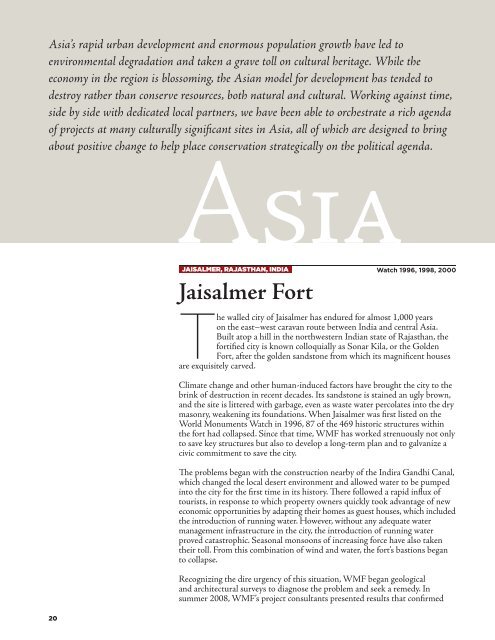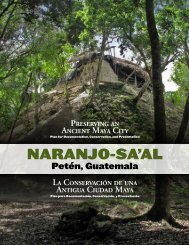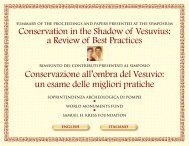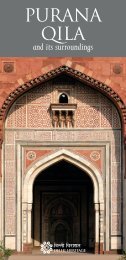2008 Annual Report - World Monuments Fund
2008 Annual Report - World Monuments Fund
2008 Annual Report - World Monuments Fund
You also want an ePaper? Increase the reach of your titles
YUMPU automatically turns print PDFs into web optimized ePapers that Google loves.
Asia’s rapid urban development and enormous population growth have led to<br />
environmental degradation and taken a grave toll on cultural heritage. While the<br />
economy in the region is blossoming, the Asian model for development has tended to<br />
destroy rather than conserve resources, both natural and cultural. Working against time,<br />
side by side with dedicated local partners, we have been able to orchestrate a rich agenda<br />
of projects at many culturally significant sites in Asia, all of which are designed to bring<br />
about positive change to help place conservation strategically on the political agenda.<br />
Asia<br />
20<br />
jaisalmEr, rajasthan, india<br />
Jaisalmer Fort<br />
Watch 1996, 1998, 2000<br />
The walled city of Jaisalmer has endured for almost 1,000 years<br />
on the east–west caravan route between India and central Asia.<br />
Built atop a hill in the northwestern Indian state of Rajasthan, the<br />
fortified city is known colloquially as Sonar Kila, or the Golden<br />
Fort, after the golden sandstone from which its magnificent houses<br />
are exquisitely carved.<br />
Climate change and other human-induced factors have brought the city to the<br />
brink of destruction in recent decades. Its sandstone is stained an ugly brown,<br />
and the site is littered with garbage, even as waste water percolates into the dry<br />
masonry, weakening its foundations. When Jaisalmer was first listed on the<br />
<strong>World</strong> <strong>Monuments</strong> Watch in 1996, 87 of the 469 historic structures within<br />
the fort had collapsed. Since that time, WMF has worked strenuously not only<br />
to save key structures but also to develop a long-term plan and to galvanize a<br />
civic commitment to save the city.<br />
The problems began with the construction nearby of the Indira Gandhi Canal,<br />
which changed the local desert environment and allowed water to be pumped<br />
into the city for the first time in its history. There followed a rapid influx of<br />
tourists, in response to which property owners quickly took advantage of new<br />
economic opportunities by adapting their homes as guest houses, which included<br />
the introduction of running water. However, without any adequate water<br />
management infrastructure in the city, the introduction of running water<br />
proved catastrophic. Seasonal monsoons of increasing force have also taken<br />
their toll. From this combination of wind and water, the fort’s bastions began<br />
to collapse.<br />
Recognizing the dire urgency of this situation, WMF began geological<br />
and architectural surveys to diagnose the problem and seek a remedy. In<br />
summer <strong>2008</strong>, WMF’s project consultants presented results that confirmed
















